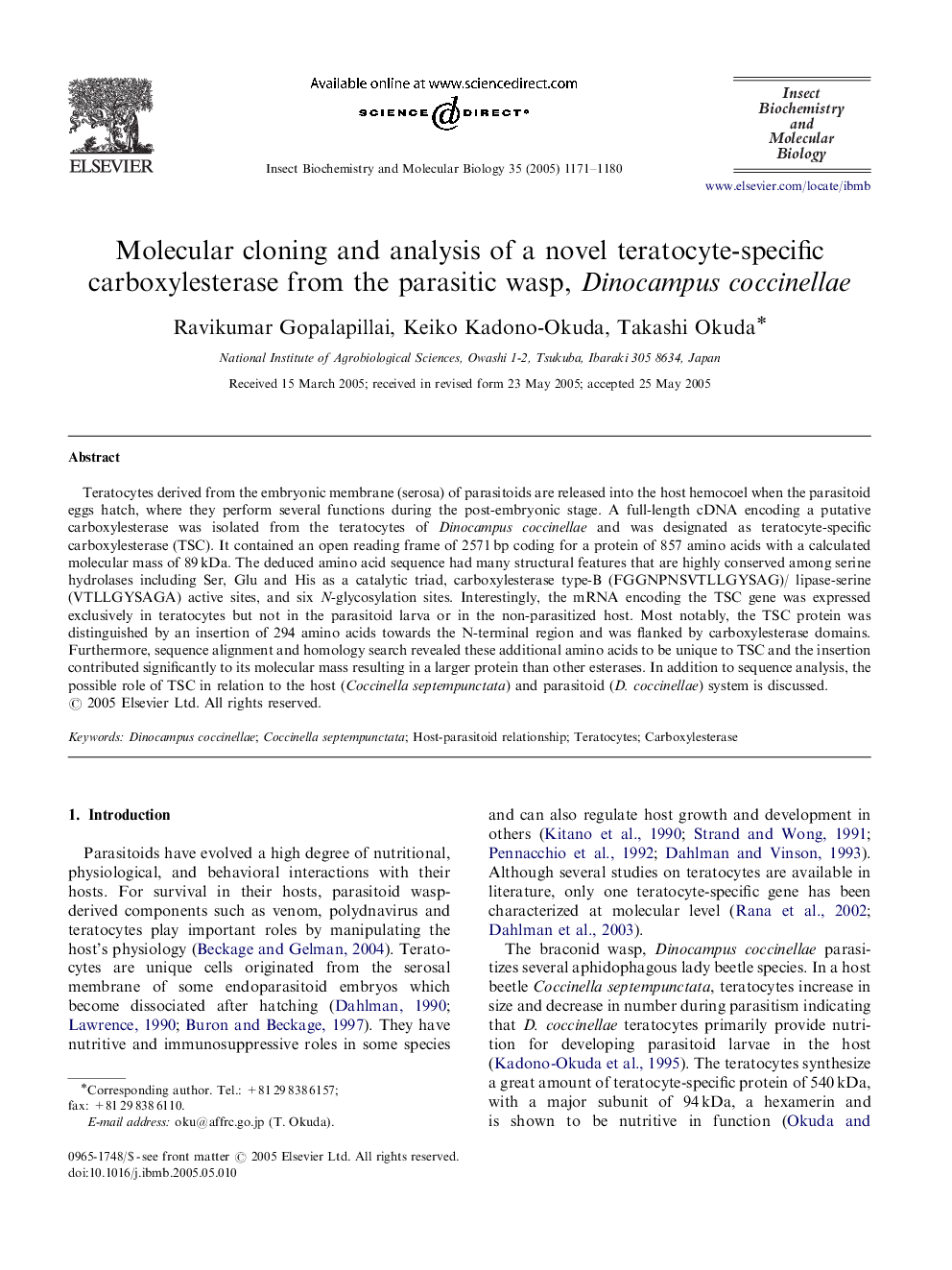| Article ID | Journal | Published Year | Pages | File Type |
|---|---|---|---|---|
| 10824376 | Insect Biochemistry and Molecular Biology | 2005 | 10 Pages |
Abstract
Teratocytes derived from the embryonic membrane (serosa) of parasitoids are released into the host hemocoel when the parasitoid eggs hatch, where they perform several functions during the post-embryonic stage. A full-length cDNA encoding a putative carboxylesterase was isolated from the teratocytes of Dinocampus coccinellae and was designated as teratocyte-specific carboxylesterase (TSC). It contained an open reading frame of 2571Â bp coding for a protein of 857 amino acids with a calculated molecular mass of 89Â kDa. The deduced amino acid sequence had many structural features that are highly conserved among serine hydrolases including Ser, Glu and His as a catalytic triad, carboxylesterase type-B (FGGNPNSVTLLGYSAG)/ lipase-serine (VTLLGYSAGA) active sites, and six N-glycosylation sites. Interestingly, the mRNA encoding the TSC gene was expressed exclusively in teratocytes but not in the parasitoid larva or in the non-parasitized host. Most notably, the TSC protein was distinguished by an insertion of 294 amino acids towards the N-terminal region and was flanked by carboxylesterase domains. Furthermore, sequence alignment and homology search revealed these additional amino acids to be unique to TSC and the insertion contributed significantly to its molecular mass resulting in a larger protein than other esterases. In addition to sequence analysis, the possible role of TSC in relation to the host (Coccinella septempunctata) and parasitoid (D. coccinellae) system is discussed.
Related Topics
Life Sciences
Agricultural and Biological Sciences
Insect Science
Authors
Ravikumar Gopalapillai, Keiko Kadono-Okuda, Takashi Okuda,
